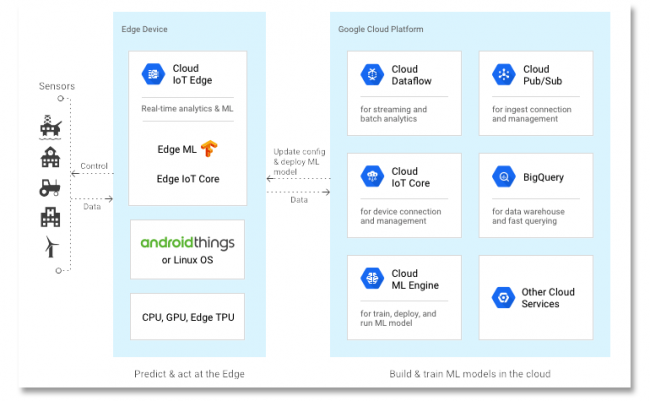Five Trends Influencing Linux's Growth at the Endpoint

A recent IDC InfoBrief identified Linux as the only endpoint operating system growing globally. While Windows market share remains flat, at 39% in 2015 and 2017, Linux has grown from 30% in 2015 to 35% in 2017, worldwide. And the trend is accelerating.
Considering everywhere that systems built around the Linux kernel are used, we quickly realize that Linux is the most dominating operating system in the comparatively brief history of computer technology. Information systems have changed dramatically since August 1991 when Linus Torvalds announced, “I'm doing a (free) operating system (just a hobby, won't be big like gnu) for 386(486) AT clones.” With all due respect to the icons of open source, Linus is without question the Nicolas Tesla of information technology.
The influence of Linux boggles the mind—smartphones, televisions, digital video recorders, airline entertainment systems, automobile control systems, digital signage, routers, switches and, of course, the desktop operating system for the one percent, which in this case are those of us who run a Linux distro as their core OS.
Why Linux?
Although the “Which is the better operating system: Microsoft Windows or a Linux-based OS?” debate is as popular as ever these days, in truth, Linux has won the war. If there is any doubt, consider the influence of the Linux-based Android operating system (and its UNIX-based Apple brethren) to that of Microsoft Windows. Windows still has a place in our lives, but only because of the large volume of core applications that require a Windows OS. This will not always be the case, and to Microsoft’s credit, it has seen the future, and the future is Linux.
Over the past ten years, Microsoft has been enabling Linux and open-source technology. In July 2009, Microsoft quietly contributed 22,000 lines of source code to the Linux kernel under the GPLv2 license. Without a doubt, Microsoft’s motives were self-serving; it needed to ensure that Windows and Linux would interoperate well into the future. Microsoft achieved this goal when its code was accepted by the Linux kernel developers.
In more recent years, Microsoft has continued to embrace Linux. Microsoft supports Linux-based operating systems running on its Hyper-V hypervisor and Microsoft Azure, which uses Linux-based components and supports Linux OS guests. Microsoft ported SQL Server to Linux, albeit for internal use, and has made it available publicly. And by developing the Windows Subsystem for Linux, Microsoft made it possible to run Linux application workloads on Windows Server.
It took Microsoft a few years to acknowledge the populist change in the software development world. Linux was thriving in an Open Source community, and competitors were succeeding. As early as 1998, companies like IBM and Oracle had announced Linux support. Startup companies like Google, Amazon and Netflix were building new businesses on Linux by writing code for everything from the Elastic Compute Cloud to entertainment delivery systems to Android and Chrome OS.
Linux Endpoint Game
In the world of End User Computing (EUC), Microsoft has dominated the endpoint for 30 years. But changes in the workplace, security concerns and other influences are driving EUC into the data center. And as the delivery of EUC has moved to the data center, there has developed a strong desire to minimize the risk and costs associated with maintaining Windows on the edge.
In the quest to address Windows on the edge, the versatility of a Linux operating system has proven to be an ideal solution. The lightweight, layered structure of Linux performs well across many device types, and it provides for a responsiveness that includes faster logon times and shorter speeds to application. With the inherent advantages of the open-source development model, Linux-based solutions are the natural choice for the agile development of new and focused endpoint applications. As a result, Linux has become the choice for endpoint workflows, including remoting Windows applications from cloud-based services.
Linux Adoption
In its InfoBrief, IDC notes five key factors contributing to the growth of Linux, thereby further changing the endpoint computing paradigm:
-
Cloud spending
-
Large player adoption
-
Internet of Things (IoT)
-
Security concerns
-
Cost sensitivity
Cloud spending. Most major cloud platforms, including Amazon’s AWS, are Linux-based, putting Linux in a strong position for future growth as more spending on cloud infrastructure continues. IDC estimates 60% of infrastructure spending will be for public or private cloud by 2022, compared to 46% in 2017. Another driver is the growth of cloud-based delivery of desktop services. A Software as a Service (SaaS) industry market report by Finances Online estimates that Desktop-as-a-Service (DaaS) will grow by 23%, reaching a spending of as much as $48.6 billion per year. That presents a large footprint opportunity for extending the influence of Linux-based operating systems to the desktop.
Large player adoption. Microsoft, Intel and other large players are expanding Linux offerings. Microsoft now has a Linux open-source platform in Azure Sphere, and as IDC notes, this encourages enterprises to become more comfortable with deploying Linux-based solutions. Intel has launched its Clear Linux Project that is a Linux OS optimized for Intel processors. HPE has aligned with ClearOS and is shipping the operating system on ProLiant servers, and IBM has acquired Red Hat.
Further evidence of Linux reaching deeper into large players’ business strategy is the closer alliance between Intel and Alibaba, which will have far-reaching implications in cloud deployment, machine learning and a wide range of applications. One of their important initiatives is Intel and Alibaba teaming up on AliOS, which VentureBeat described as a highly customized Linux distribution, tailored for mobile, industrial and IoT devices.
Internet of Things. The proliferation of IoT will contribute to further Linux growth. Many virtual appliances already use the Linux kernel, and analyst projections indicate Linux will benefit by dominating IoT device proliferation. Gartner claims that there were 8.4 billion connected things in 2017 with expectations to rise to 20.4 billion in 2020. Nearly all of these “connected things” will be running a Linux kernel.
The emerging environment of IoT edge computing is another factor that will propel Linux growth. Google and Microsoft have new products for the IoT edge. Google is offering the Edge TPU and Cloud IoT Edge, the former to support machine-learning in edge devices, and the latter to extend the Google Cloud to IoT gateways and edge devices. Microsoft now has the Azure IoT Edge, which containerizes cloud workloads and enables their running locally on a variety of devices.
This type of innovation creates more need for Linux adoption, which will increase as new technologies come on board to simplify management and enhance Linux features for IoT devices.

Image: Google
Security concerns. IDC researchers found that improving security remains the top priority (40%) for organizations, and of particular concern is the vulnerability of the endpoint. Linux-based endpoint devices, including thin clients, are the toughest against threats since Linux operating systems are generally limited to specific functionality and are nearly impossible to manipulate when hardened and properly configured.
As IDC also notes, Linux provides the advantages of customization and the Open Source community where software development professionals can review source code, add customizations and respond to vulnerabilities. Individuals and IT operations groups can then apply updates and patches knowing that qualified endpoint developers have tested for stability, performance optimizations and security.
Cost Sensitivity. IDC cautioned, “As options for cloud providers and service selection continue to grow, buyers will become increasingly cost-aware when making purchasing and partnership decisions.” Linux-based OS solutions address this global sensitivity to reducing capital expenditures, and this fact is especially true for endpoint solutions used in the delivery of EUC. For example, organizations can deploy thin-client operating system software to extend the life of legacy hardware investments by converting x86-based devices into Linux-based endpoints.
Linux Meets the Future
The open-source nature of Linux is such that we may never see another kernel, and with good reason…Linux simply will continue to evolve to meet whatever technological demands are required of it. Secure, customizable, endpoint solutions that build on the Linux kernel and other open-source components will offer a means to control spending amid the continuing proliferation of devices and movement of workloads to the cloud. Linux at the endpoint—and as the secure choice for the growing number of IoT devices—is the OS that is future-ready. As billions more devices come online, and the Internet of Things takes hold, Linux is the one OS that can securely accommodate the cloud, the edge and the endpoint.
RESOURCES
“Linux and the Thin Client Management Market,”
https://www.igel.com/wp-content/uploads/2018/08/IDC_Igel-InfoBrief-Final.pdf
https://groups.google.com/forum/#!original/comp.os.minix/dlNtH7RRrGA/SwRavCzVE7gJ
https://groups.google.com/forum/message/raw?msg=comp.os.minix/dlNtH7RRrGA/SwRavCzVE7gJ
https://en.wikipedia.org/wiki/History_of_Linux#Microsoft_Competition_and_Collaboration
https://financesonline.com/2018-saas-industry-market-report-key-global-trends-growth-forecasts/
https://www.zdnet.com/article/edge-computing-the-state-of-the-next-it-transformation/









